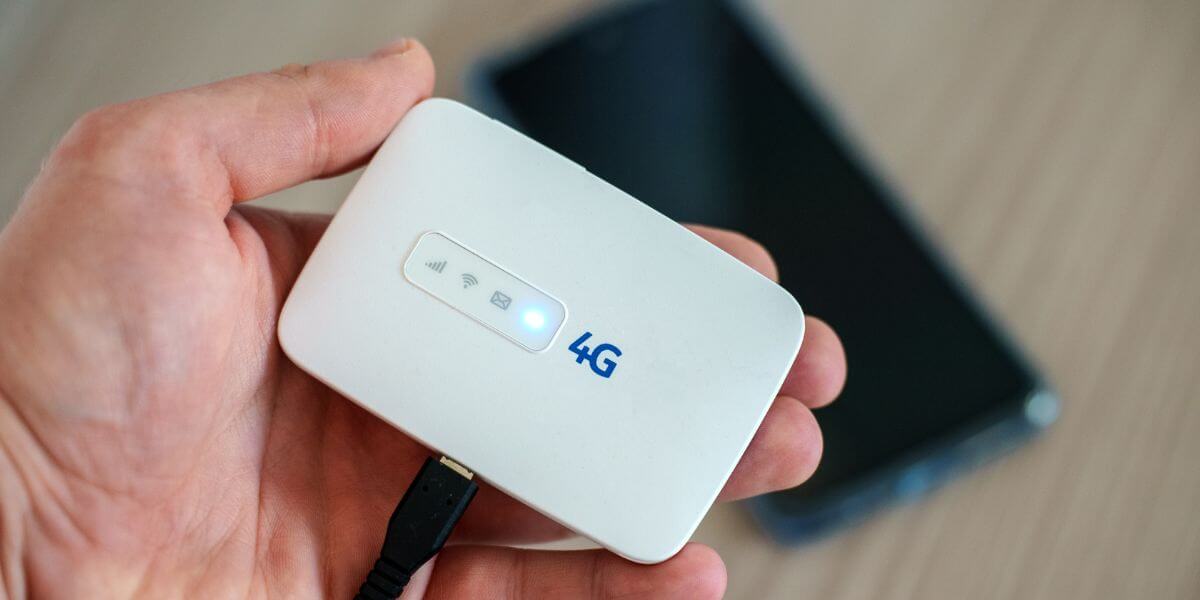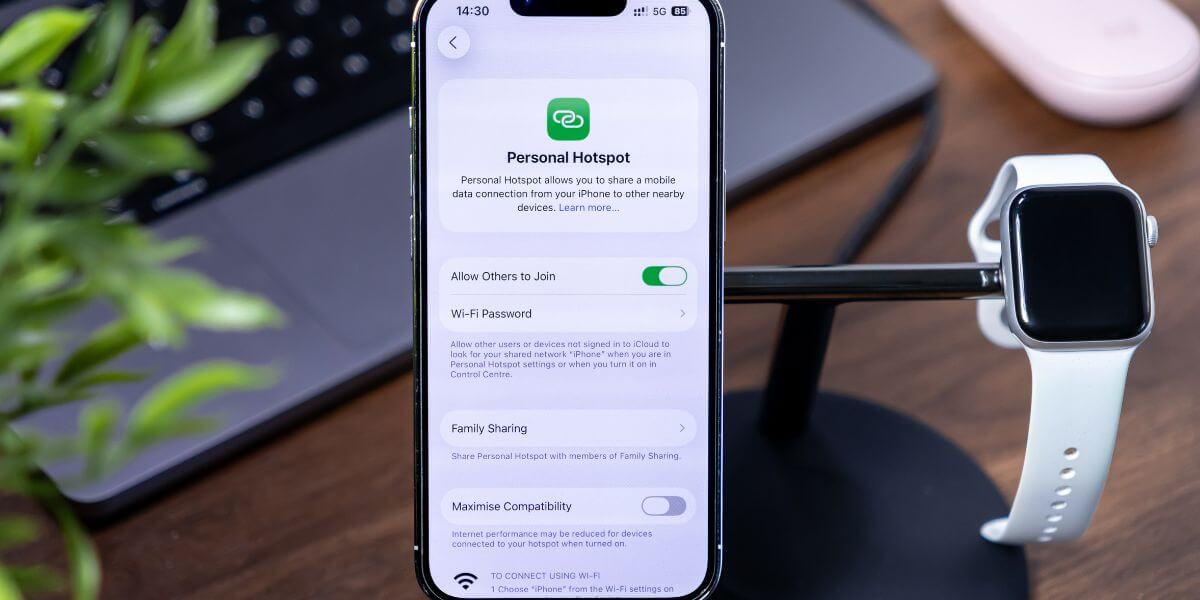Lower your internet bill
61% of people overpay for their internet.
Are you one of them?
Unlock exclusive offers in your area!
Call now
[tel]Enter zip code
1 Star is Poor & 5 Stars is Excellent.
* Required
Written by Sam Watanuki - Pub. Nov 20, 2025 / Updated Nov 20, 2025
Table of Contents
Are you happy with your Internet service?
About the author
For mobile hotspots, what once required a separate device and dedicated data plan can now be handled directly through your smartphone with generous data allowances that would have seemed impossible just a few years ago. This shift reflects both increasing consumer demand for connectivity on the go and the maturation of 5G networks across the United States.
In 2025, the best hotspot data plans come bundled with comprehensive smartphone service rather than as standalone offerings. Major carriers have responded to changing work patterns—including the rise of remote work and digital nomadism—by dramatically increasing hotspot data allocations in their premium plans. Where 10GB of hotspot data was considered generous in 2020, today’s top plans offer 200GB or more.
61% of people overpay for their internet.
Are you one of them?
Unlock exclusive offers in your area!
Call now
[tel]Enter zip code
Mobile hotspot data plans allow you to share your cellular connection with other devices like laptops, tablets, or gaming systems. Your smartphone acts as a portable Wi-Fi router, creating a wireless network that other devices can join. This capability has become essential for remote workers, travelers, students, and anyone who needs reliable internet access away from home or office Wi-Fi networks.
The technology works by converting your phone’s cellular data connection into a local Wi-Fi signal [1]. When you enable the hotspot feature on your device, it broadcasts a network name and password that other devices can use to connect. The connected devices then route their internet traffic through your phone’s cellular connection.

How Much Hotspot Data Do You Actually Need?
Understanding your data requirements helps you avoid overpaying for capacity you won’t use or running out of high-speed data when you need it most. According to OpenVault, the average person uses approximately between 650 and 700 GB of data per month [2].
To get an idea as to how much data you may need, here’s a breakdown of standard usages for different internet activity:
Based on current offerings and varying user needs, the following plans are some of the top options available in 2025 across value, network speed, and coverage.
T-Mobile’s flagship plan leads the market with 100GB of monthly hotspot data at $50 per month [3]. This plan leverages T-Mobile’s extensive 5G network, which now covers over 330 million Americans according to the company’s latest coverage maps [4]. The network has consistently ranked first in 5G availability and speed tests conducted by independent firms like Ookla [5].
Beyond the generous hotspot allocation, this plan includes unlimited premium smartphone data, international roaming in 11 countries, and enhanced customer service.
Best for: Heavy users, remote workers, digital nomads, and international travelers who need maximum flexibility.
Verizon’s premium offering provides 150GB of hotspot data for $60 monthly [6]. Verizon’s network consistently scores highest in reliability metrics, particularly in rural areas. The Federal Communications Commission’s latest broadband deployment report shows Verizon maintains extensive 4G LTE coverage, crucial for areas where 5G hasn’t fully deployed [7].
This plan includes access to Verizon’s 5G Ultra Wideband network where available, offering solid speeds in optimal conditions.
Best for: Users who prioritize consistent connectivity, frequent rural travelers, and those in areas with spotty 5G coverage.
AT&T’s plan offers 100GB of hotspot data at $80 monthly. While the data allocation appears modest compared to competitors, AT&T maintains the broadest 4G LTE network footprint according to independent coverage mapping. This advantage matters significantly in rural America, where 5G deployment remains limited [9].
The plan suits users who split time between urban and remote locations, ensuring connectivity even in areas where newer networks haven’t reached, with AT&T’s recent infrastructure investments improving network speeds as well [10].
Best for: Part-time remote workers, rural residents, and users who need guaranteed coverage over maximum speed.

What About Standalone Hotspot Devices?
Dedicated mobile hotspot devices have lost market relevance as smartphone plans became more generous. However, they still serve specific use cases. Standalone hotspots allow multiple device connections without draining your phone’s battery, and some models offer faster theoretical speeds than smartphone hotspot features.
If you already own a standalone device, data-only plans start around $20-30 monthly for 10-20GB. T-Mobile’s $20 plan with 15GB works with most unlocked hotspot devices and includes international roaming in 11 different countries.
When evaluating the best internet providers for hotspot capability, consider these factors beyond just data allocation:
Advertised internet prices for hotspot plans typically require autopay enrollment and paperless billing, potentially adding $5-10 monthly without these features. Most carriers also charge a one-time $35-40 activation fee for new lines.
Taxes and fees vary by location but generally add 15-20% to your base price. When comparing internet plans, calculate total monthly costs including these additions. Some carriers include all taxes and fees in their advertised rate, simplifying price comparisons.

Tips for Optimizing Your Hotspot Usage
Maximizing your hotspot data requires strategic management. Reduce video streaming quality to 720p or lower when bandwidth doesn’t matter. Disable automatic updates and cloud sync on connected devices, scheduling these for Wi-Fi networks instead. Use browser extensions that compress data, and consider VPN services that include data-saving features.
Monitor your usage through your carrier’s app to avoid surprises. Most apps show daily consumption and project whether you’ll exceed your monthly allocation, allowing you to adjust behavior before throttling kicks in.
Industry trends suggest continued increases in hotspot allocations as carriers compete for premium customers. T-Mobile has signaled potential for unlimited high-speed hotspot data in future plans, though likely at higher price points. The Federal Communications Commission’s ongoing 5G spectrum auctions will enable faster speeds and greater capacity, making generous hotspot allowances more sustainable for carriers [11].
As remote work solidifies as a permanent option for millions of Americans, the best internet in your area increasingly means the best cellular coverage rather than the fastest home broadband. This shift has prompted traditional internet providers to explore partnerships with mobile carriers, though fully converged offerings remain limited.
Yes, but with important caveats. Premium hotspot plans with larger data allocations can replace home broadband for moderate users, particularly in areas where traditional internet providers offer limited options. However, multiple household members with heavy usage needs may exceed even generous caps. Additionally, carrier terms of service sometimes restrict using mobile plans as primary home internet, though enforcement is inconsistent.
Carriers throttle speeds after you exhaust your high-speed allocation to manage network capacity and encourage users to upgrade to higher-tier plans. The throttled speeds vary by carrier—some drop to 3G speeds (around 2Mbps), while others maintain more usable speeds around 6Mbps. This practice, called “data deprioritization," affects only your hotspot connection, not your smartphone’s direct data usage in most plans.
Prepaid plans offer budget-friendly options without credit checks or contracts, making them ideal for temporary needs or users with credit concerns. However, they typically provide less hotspot data than postpaid plans and may use lower priority network access during congestion.
Start by entering your zip code on carrier websites to view available plans and coverage. Cross-reference this information with independent coverage mapping services and customer reviews specific to your area, as network performance varies significantly by location. Consider visiting carrier stores to test speed using their devices in your typical usage locations. Local recommendations from neighbors or community social media groups often provide valuable real-world insights about which carriers perform best in your specific neighborhood. Remember that the best internet providers nationally may not deliver the best performance at your particular address.
[1] Verizon. “Hotspots: A comprehensive guide.”
[2] OpenVault. “Broadband Insights Report (OVBI) 4Q23"
[3] T-Mobile. “Hotspot Plans.”
[4] T-Mobile. “T‑Mobile Is the Network Champion.”
[5] Ookla. “2024 SpeedTest Awards.”
[6] Verizon. “Mobile Hotspot Plans.”
[7] FCC. “FCC National Broadband Map.”
[8] AT&T. “Wireless Broadband.”
[9] Hiboost. “AT&T vs T-Mobile vs Verizon Signal: Who Has the Best Coverage in 2025?”
[11] FCC. “Auctions.”
About the author
Congratulations, you qualify for deals on internet plans.
Speak with our specialists to access all local discounts and limited time offers in your area.
[tel]61% of people overpay for their internet.
Are you one of them?
Unlock exclusive offers in your area!
Call now
[tel]Enter zip code